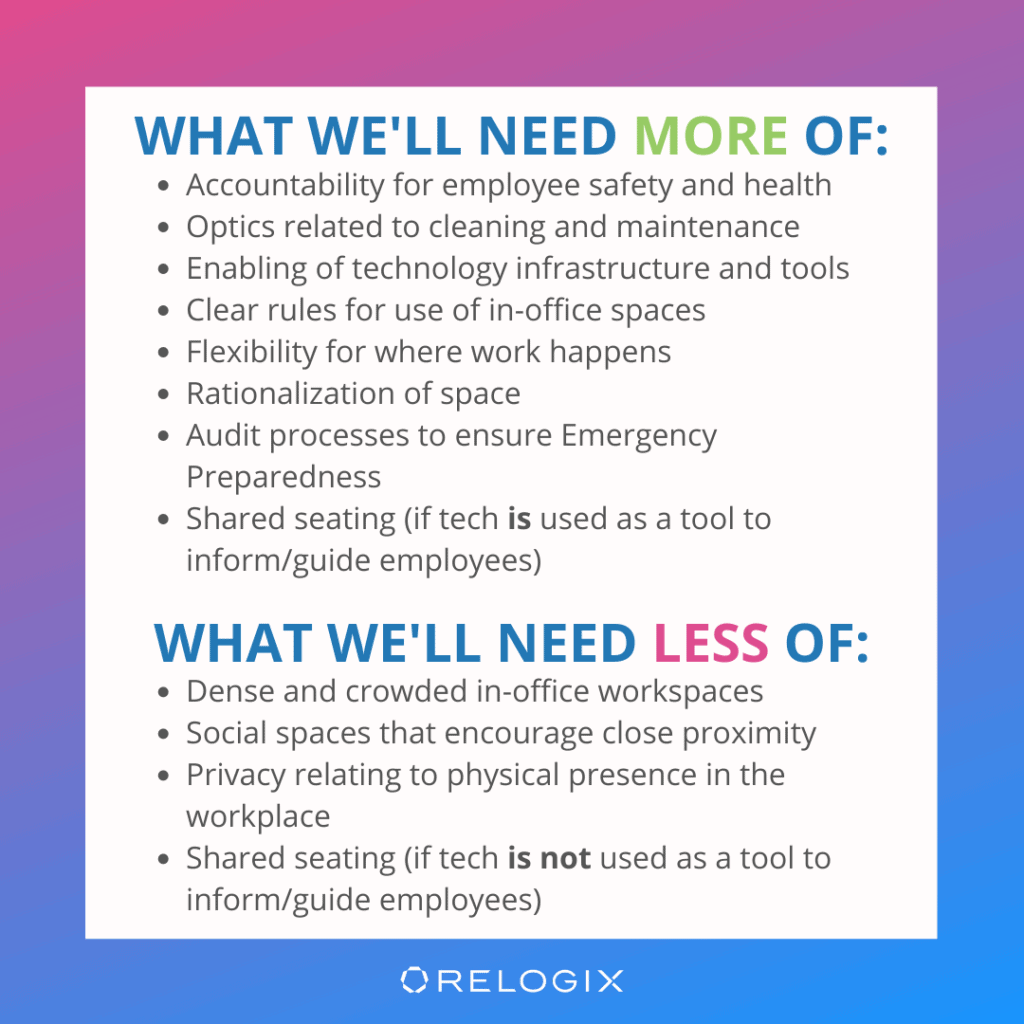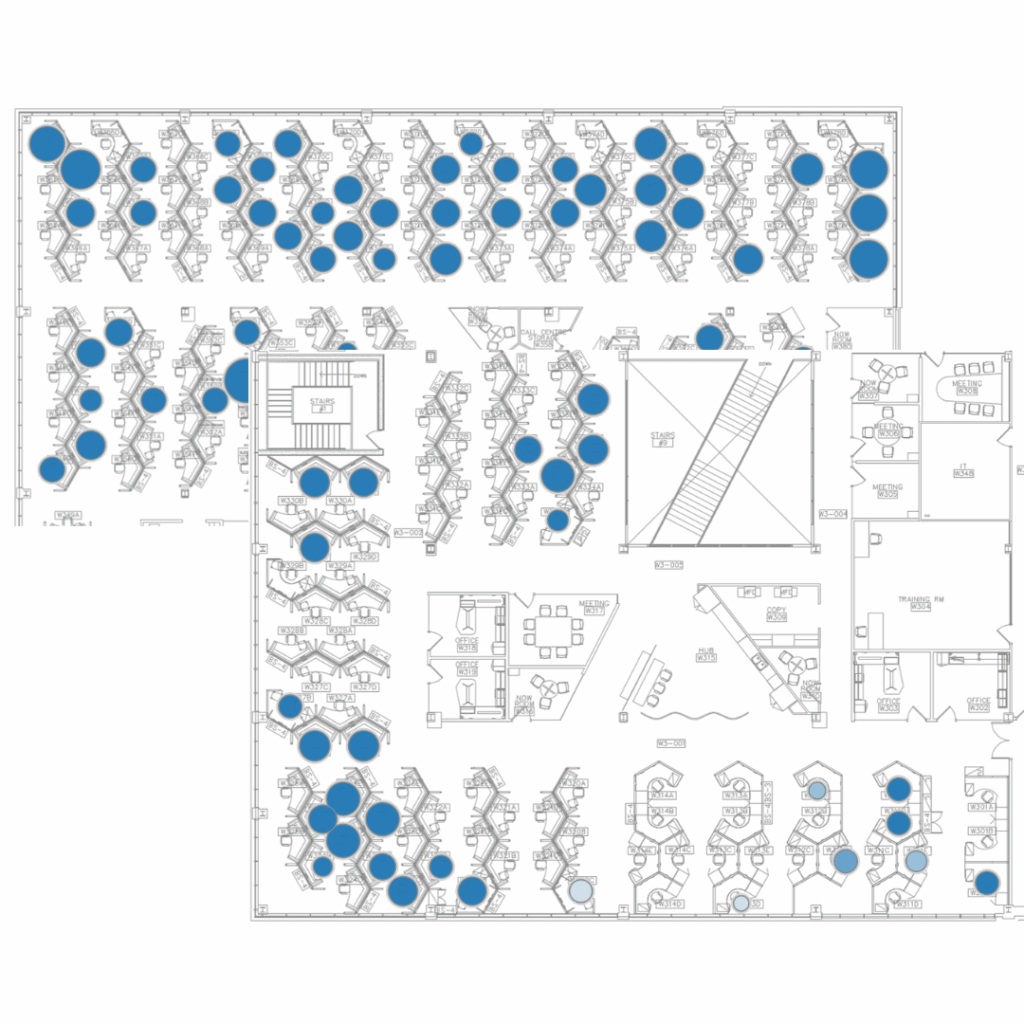The Future Of The Workplace: How To Prepare For The New Normal
Across North America, we’re seeing companies rethinking office life as virus restrictions are beginning to ease. Pre-COVID workplaces composed of shared seating, open plans and collaboration spaces are getting makeovers to account for the new social distancing era. We’re learning from our global clients and partners that a safe return to work is dependent on methodical measures to prevent a second wave of infections. While this process is very much a work in progress, it’s clear that the workplaces we’ll be returning to in North America will look and feel very different from the ones we left in March.
While cost saving measures may be high priority as a result of the global work from home experiment and impending recession brought on by COVID-19, the needs of employees have to come first. In a tenuous business environment where customers and clients are reexamining their priorities, people matter more than ever in the new workplace. Keeping employees safe and healthy, while offering flexibility in how they choose to work, will allow companies to recruit and retain top talent. With many employees opting to work from home to some degree, this will likely balance out requirements of future office space.
As we move forward, we’ll likely see a combination of in-office shared and assigned seating, along with employees working from home — more so than ever before.
50% of the workforce will likely be working across a Total Workplace Ecosystem balancing office, home and third spaces. ~ Cushman & Wakefield
Only 12% of people want to continue to work from home full-time, or are looking for a balance between the two. The amount varies by industry. On average, most employees want to work from home two-to-three days or less. ~ Gensler
Evaluating Our Current Workplaces
By understanding the needs of our clients and the challenges that lie ahead for them as we enter a new world of work, we put our heads together to think about how future workplaces will differ from our current arrangements as we transition back to offices.

Tomorrow’s workplaces will also require a balance between how companies can reduce costs and how they can provide a safe in-office work environment for instances where working from home is not a preferable option. COVID-19 has drastically redefined what a safe and healthy office environment looks like. It has also accelerated the evolution of the workplace, particularly with how technology can help stop the spread of infectious disease.
Decision makers are asking us: How can technology be used to keep office occupants safe and what can we do now to start preparing for our new normal?
COVID-19 Workspace Monitoring
Workspace analytics technology provides the ability to monitor employees and see where people are clustering. Having employees too close together will put their health and the organization at risk. At Relogix, our solution provides an ecosystem of products specifically designed to collect, gather, secure and share the information CRE professionals need to inform real estate strategy, monitor change, and measure impact. Our technology can help companies ensure spaces are used according to new social distancing protocols and the data accrued can demonstrate that a company took every precaution to protect all office occupants.

- Maintain humidity levels between 40 – 60%
- Increase fresh air intake to maintain positive air pressure
- Open dampers 100% to push inside air out and eliminate air recirculation
- Establish clean desk protocols to support effective and frequent cleaning of surfaces
- Enable cleaning staff to clean work surfaces during the workday as required
- Plan a staged recall strategy for return to work e.g. people unable to work from home, critical ‘in office’ functions return first,
- Pre-plan employee seating with a 6 ft radius (consider every 3 seats apart and avoid back-to-back or face-to-face seating that is < 6 ft apart, even with dividers)
- Increase occupancy slowly e.g. start at 20 or 30% with gradual increase and support employees who can and want to continue to work from home
- Temporarily minimize shared desk seating to mitigate possible cross contamination
Watch our free webinar to learn more: How to Manage the Workspace During the COVID Crisis. COVID-19 has accelerated the work from home movement and many organizations will likely embrace out of office work moving forward. As a result, traditional office spaces will no longer be central locations for work but rather, a component of a variety of locales. Our technology can help you be better prepared to support the health, safety and well-being of your office occupants as we reshape our workplaces for the new normal.

